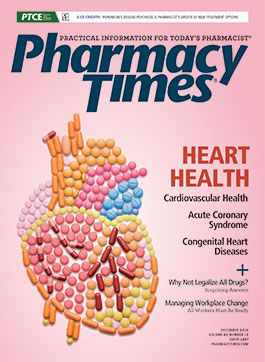Publication
Article
Pharmacy Times
US Generics Market Forecasted to Grow from 2016 to 2020
Author(s):
The US generic market has continuously been defined by shifting industry dynamics, shaped by changing opportunities, products, players, pricing, and regulations.
The US generic market has continuously been defined by shifting industry dynamics, shaped by changing opportunities, products, players, pricing, and regulations. Despite skepticism in the industry over its opportunity for growth, a research report released by Morgan Stanley highlights a promising roadmap for the US generic market from 2016 to 2020.
Morgan Stanley’s bottom-up analysis of the top 200 products in the United States identifies potential opportunities for generic players over the next 5 years. These opportunities are based on the new patent expiration of branded drugs, which gives generic players an opening to launch their products. The report forecasts that roughly $80 billion in branded sales will lose patent protection over the next 5 years, in addition to $23 billion in branded sales of complex products with limited patent protection. This means a $20 billion opportunity in new generics. An expected incremental $20 billion in generic sales could leverage the current $45 billion market to $65 billion, with another estimated $6 to $7 billion in biosimilars opportunities over the next 7 years. This outlook positions companies with the right product selection and strong R&D capabilities as being the most successful.
According to the report, competition in the market is likely to remain intense. US generic players are expected to lose some share to Indian generic companies, as global competitors in the US market continue to grow. However, top players, such as Teva and Mylan, are waiting on a large number of abbreviated new drug application (ANDA) approvals, which could expedite growth over the next few years.
Along with the potential of an increasing generic market comes the matter of drug pricing. More generic players per product means more product supply, which should bring steeper price decreases. The uncertainty of the generic drug pricing outlook could offset estimated opportunity gains in the industry. Factors such as a spike in product approvals driven by the FDA’s Generic Drug User Fee Amendments and the FDA’s scrutiny of manufacturing facilities are key predictors for pricing over the next few years.
As the FDA nears the end of clearing its backlogged pending ANDA approvals, a resulting product oversupply can instigate a sharp decline in prices. However, the FDA is only required to review, not approve, pending ANDAs. New approvals are also subject to patent expirations and pending FDA queries.
New ANDA approvals have grown in 2016 and are expected to increase incrementally, but not significantly, as a result of the patent expiration cycle and higher barriers for complex generics, which delay the approval process. ANDA approvals have spiked to roughly 840 compared with the previous 650 to 700 approvals per year. According to the report, Morgan Stanley estimates that the industry will likely experience mid—single-digit base business price erosion in 2016 and 2017.
Overall, Morgan Stanley’s 5-year road map analysis expects opportunities for the US generic market to grow despite industry skepticism, especially for established generic players with strong capabilities and high research spending.







